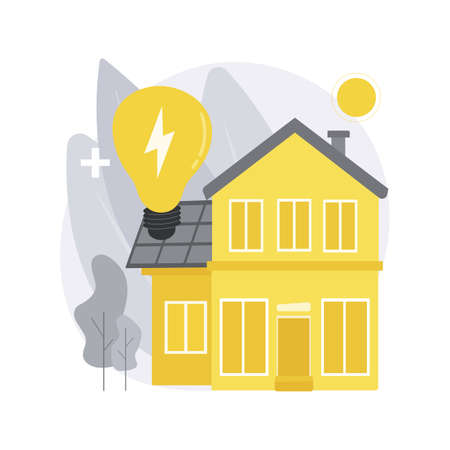1. Understanding Predictive Maintenance
Homeowners are becoming more tech-savvy, and with smart home technology on the rise, predictive maintenance is quickly gaining attention. But what exactly is predictive maintenance, and how does it differ from the traditional way we deal with household repairs?
What Is Predictive Maintenance?
Predictive maintenance uses smart sensors, machine learning, and data analytics to monitor the performance of home systems—like HVAC units, water heaters, or appliances—and predict when they might need service. This allows homeowners to address issues before they turn into expensive problems or lead to energy waste.
How It Differs from Traditional Maintenance
Unlike reactive or scheduled maintenance methods, predictive maintenance relies on real-time data. Heres a quick comparison:
| Maintenance Type | Description | Common Approach |
|---|---|---|
| Reactive Maintenance | Fixing things after they break | “Wait until it fails” |
| Preventive Maintenance | Scheduled check-ups regardless of condition | “Service every 6 months” |
| Predictive Maintenance | Using real-time data to anticipate issues | “Fix only when signs of failure appear” |
The Smart Way to Avoid Energy Waste
A major benefit of predictive maintenance is energy efficiency. When systems like your HVAC run with clogged filters or low refrigerant levels, they consume more power to maintain temperature. Smart sensors can detect these inefficiencies early and alert you before it affects your utility bill.
Example: Smart Thermostat Integration
A smart thermostat connected to your HVAC system can track usage patterns, detect anomalies in performance, and notify you if something’s off—like an air filter that needs changing. This keeps your system running smoothly and helps avoid unnecessary energy use.
The Bottom Line for Homeowners
Predictive maintenance empowers homeowners to stay ahead of costly repairs and reduce energy consumption. Its not just about fixing things—its about making your home smarter, more efficient, and better prepared for the future.
2. Smart Home Tech That Powers Efficiency
Today’s smart home technology goes far beyond convenience—it plays a key role in helping homeowners save energy and avoid costly repairs. By using predictive maintenance tools, you can monitor your home’s systems and spot potential issues before they become serious problems. Below are some of the most popular smart devices that support energy efficiency and help you keep tabs on your homes performance.
Smart Thermostats
Smart thermostats like the Nest Learning Thermostat or ecobee SmartThermostat learn your daily habits and adjust heating and cooling settings automatically. They not only make your home more comfortable but also cut down on unnecessary energy use. These devices provide detailed energy reports and can even suggest ways to improve efficiency based on your behavior.
Benefits of Smart Thermostats:
| Feature | Benefit |
|---|---|
| Learning algorithms | Automatically adjusts to your schedule |
| Remote access | Control temperature from anywhere via smartphone |
| Energy usage reports | Helps identify patterns and reduce waste |
| Integration with other devices | Works with smart speakers and sensors for full-home automation |
HVAC Monitoring Systems
Your heating, ventilation, and air conditioning (HVAC) system is one of the biggest energy consumers in your home. Smart HVAC monitors—like those from Sense or Flair—track system performance in real time. They alert you when something’s off, whether it’s reduced airflow or an unusual spike in energy use, allowing you to fix small issues before they lead to expensive breakdowns.
Why Use HVAC Monitoring?
- Detects early signs of malfunction (e.g., dirty filters, low refrigerant)
- Sends alerts directly to your phone or email
- Improves system lifespan with regular insights
- Keeps energy bills lower by optimizing performance
Smart Leak Detectors
Leaks can cause major damage and lead to mold growth if not caught quickly. Smart leak detectors like the Flo by Moen or Honeywell Lyric Wi-Fi Water Leak Detector monitor areas around sinks, water heaters, and basements for moisture. When a leak is detected, they send instant notifications so you can act fast.
Key Features of Leak Detectors:
| Device Feature | Description |
|---|---|
| Real-time alerts | Sends push notifications as soon as water is detected |
| Automatic shut-off (in some models) | Stops water flow to prevent further damage |
| Battery backup | Keeps working during power outages |
| Humidity monitoring | Helps prevent mold by tracking moisture levels over time |
The Power of Integration
The real magic happens when these devices work together. For example, a smart thermostat can communicate with your HVAC monitor to optimize system performance based on real-time data. Similarly, leak detectors can be part of a broader home monitoring system that includes humidity sensors and automatic shut-off valves. With all these tools connected through platforms like Google Home or Amazon Alexa, you get a smarter, more efficient home that practically takes care of itself.

3. Identifying Early Warning Signs with AI and Sensors
Smart home technology has come a long way, and one of the biggest advantages is its ability to help homeowners catch problems before they turn into costly repairs or high energy bills. Thanks to artificial intelligence (AI) and smart sensors, your home can now monitor itself for early signs of trouble—whether that’s a struggling HVAC system, a leaking water heater, or an inefficient appliance drawing too much power.
How AI and Smart Sensors Work Together
AI-powered systems gather data from various smart sensors placed around your home. These sensors track things like temperature changes, humidity levels, vibration patterns, and energy usage. The AI then analyzes this data in real time to detect abnormalities that may signal a problem. For example, if your air conditioner starts using more electricity than usual but isnt cooling effectively, the system can alert you before it breaks down completely or runs up your energy bill.
Common Home Issues Detected by Smart Tech
| Issue | What Sensors Detect | Potential Energy Impact | Early Warning Benefit |
|---|---|---|---|
| HVAC Inefficiency | Temperature fluctuations, unusual power draw | Higher utility bills due to overworking system | Prevent expensive repairs and reduce energy waste |
| Water Heater Problems | Vibration patterns, water temperature inconsistencies | Inefficient heating and wasted energy | Avoid breakdowns and maintain consistent performance |
| Duct Leaks or Blockages | Airflow irregularities detected by pressure sensors | Losing heated or cooled air through leaks | Catch leaks early before energy loss adds up |
| Inefficient Appliances | Sustained high energy consumption readings | Cumulative increase in electricity usage over time | Selectively upgrade or repair appliances as needed |
| Mold Risk Areas | Persistent high humidity levels detected by moisture sensors | Mold remediation can be expensive and energy-intensive (dehumidifiers) | Tackle moisture issues before mold forms and spreads |
The Bottom Line: Stay Ahead of Problems with Smart Monitoring
This kind of predictive maintenance means you don’t have to wait until something breaks to take action. Instead of guessing when your equipment needs service—or worse, waiting until you’re hit with a surprise repair bill—your smart home tech gives you the heads-up. It’s like having a 24/7 home health monitor that keeps everything running efficiently while saving you money in the long run.
4. Cost Savings and Environmental Impact
Using smart technology for predictive maintenance isnt just about convenience—its also a smart financial and environmental decision. By monitoring your home’s systems in real-time, smart tech can catch small issues before they turn into costly repairs or energy drains. This proactive approach saves money on utility bills and extends the lifespan of your appliances.
Lower Utility Bills
Smart thermostats, HVAC sensors, and energy monitors help optimize how and when energy is used. For example, if your AC is working harder than it should due to a clogged filter, a smart system can alert you before your energy bill spikes. Keeping everything running efficiently leads to real savings month after month.
Estimated Monthly Savings with Predictive Maintenance
| Appliance/System | Issue Detected Early | Potential Monthly Savings |
|---|---|---|
| HVAC System | Dirty filters, inefficient cycles | $15 – $30 |
| Water Heater | Sediment buildup, heating inefficiency | $5 – $10 |
| Refrigerator | Poor door seals, overcooling | $3 – $8 |
| Laundry Machines | Overuse, worn parts | $2 – $5 |
Reduced Wear and Tear on Appliances
When your devices run more efficiently, they last longer. Smart alerts can remind you when it’s time for basic maintenance like changing filters or cleaning vents. This helps prevent breakdowns and delays the need for expensive replacements—saving hundreds or even thousands of dollars over time.
Positive Environmental Impact
The benefits go beyond your wallet. Efficiently running appliances use less electricity and water, which reduces your carbon footprint. Plus, by extending the life of your appliances, you’re keeping them out of landfills longer. Every small step helps create a more sustainable home and planet.
Environmental Benefits at a Glance:
- Lower Energy Use: Less demand on power plants means fewer greenhouse gas emissions.
- Less Waste: Extending appliance life reduces electronic waste.
- Smarter Water Use: Detecting leaks early prevents water waste.
Predictive maintenance with smart tech isn’t just good for your home—it’s great for your budget and the environment too.
5. Steps to Get Started at Home
If youre new to predictive maintenance and smart home tech, dont worry—getting started is easier than you think. Heres a step-by-step guide designed for homeowners who want to reduce energy waste and improve home efficiency using smart technology.
Step 1: Identify Key Appliances and Systems
Start by making a list of the most energy-intensive systems in your home. These are usually:
- HVAC systems (heating, ventilation, air conditioning)
- Water heaters
- Refrigerators
- Washing machines and dryers
These devices are great candidates for predictive maintenance with smart sensors and monitoring tools.
Step 2: Choose the Right Smart Devices
Select devices that match your needs and budget. Look for products compatible with your current smart home ecosystem (like Google Home, Amazon Alexa, or Apple HomeKit).
| Device Type | Main Function | Popular Brands |
|---|---|---|
| Smart Thermostat | Learns patterns, optimizes HVAC usage | Nest, Ecobee, Honeywell |
| Smart Plugs & Energy Monitors | Track power usage of specific devices | Kasa, Sense, Emporia |
| Leak Detectors & Water Sensors | Avoid water damage & detect issues early | Flo by Moen, Honeywell Lyric |
Step 3: Install and Set Up Devices
You can often install many smart devices on your own using step-by-step apps provided by the manufacturer. For more complex systems like HVAC monitors or whole-home energy monitors, professional installation may be needed.
Tips:
- Create a central control hub using an app or voice assistant.
- Name devices logically so they’re easy to manage (e.g., “Living Room AC”).
Step 4: Integrate with Your Existing Systems
If you already have smart tech at home, make sure your new devices can communicate with them. Use platforms like:
- If This Then That (IFTTT): Automate actions across different brands.
- Z-Wave/Zigbee Hubs: Great for managing multiple smart devices under one system.
Step 5: Monitor & Adjust Settings Regularly
Your job isn’t done after installation! Check your apps weekly to review performance data. Many devices will notify you if something’s off—like an air filter needing replacement or unusual water usage patterns.
A few things to look for:
- Sustained high energy use during off-peak hours
- Inefficient heating or cooling cycles
- Anomalies in water usage that could suggest leaks or faulty appliances
This proactive approach helps you catch problems before they turn into costly repairs—and keeps your utility bills in check.


